
BioVR
A Case Study in Biofeedback-Driven XR for Enhanced Fitness Experiences
TEAM
Yuchen Zhao, Kexin Chen, Xuerui Wang, Bing Hu, Chaoyi Wang (Core Part)
MY JOB
Unity Development, Design, Paper
Project Management
TOOLS
Unity 3D
DELIVERABLES
Project + Paper
INSTRUCTOR
Prof. Jay Bolter
PURPOSE
Project for my PhD dissertation
DURATION
2023.08- 2025.05
CATEGORY
VR, wearable device, biofeedback data
AFFILIATIONS
Georgia Tech
PRESENTATIONS/PUBLICATIONS/REWARDS
• DISSERTATION IDEA
Interactivity has remained a central concept in digital media, continually evolving alongside technological advancements and interface innovations. As computing transitions from the personal desktop era to the mobile age and into the current era of ubiquitous computing, definitions of interactiv- ity have expanded—from discrete user commands to more embodied, con- tinuous, and context-sensitive exchanges. This evolution has had profound implications for persuasive technology, where interactivity plays a dual role: enhancing user engagement and enabling real-time, adaptive feedback that can more effectively influence users’attitudes and behaviors. These develop- ments set the stage for new modalities that incorporate internal physiological signals, opening opportunities for immersive systems that adapt dynamically to users’ bodily states.
This study investigates the integration of real-time physiological biofeed- back into Virtual Reality (VR) as a novel form of persuasive interaction. While traditional Human-Computer Interaction (HCI) has evolved from explicit in- put methods to more embodied and context-aware interfaces, the potential of internal signals—such as heart rate—as active input in immersive media remains underexplored, particularly in the domain of persuasive technology aimed at influencing users’attitudes and behaviors. Drawing from theories and model in persuasive technology and other HCI frameworks, this research introduces BioVR, a VR cycling system where users’heart rates dynamically control environmental elements like speed and lighting. Through a mixed- methods user study comparing BioVR with a control condition using only an Apple Watch, the findings show that BioVR significantly improves time spent in target heart rate zones and self-reported engagement. Qualitative insights reveal that responsive environmental feedback fosters intrinsic motivation, distracts from fatigue, and enhances time perception.
This work makes three key contributions.
- Theoretically, it proposes and validates a new interaction paradigm in VR—biosignal-driven feedback loops—advancing the ongoing shift from Human-Computer Interaction (HCI) to Human-Computer Integration (HInt).
- Conceptually, it extends the persuasive technology framework by demonstrating how internal physiological states can serve as dynamic input for immersive environments, offering an embodied and continuous mecha- nism for behavior change.
- Practically, it offers design implications for adaptive fitness technologies that support users in maintaining effective exertion levels through responsive, affective feedback, rather than relying on traditional performance metrics or external motivators.
• KEY FEATURES




• PROJECT CONSIDERATIONS
How does BioVR align with the new HCI paradigm of Human-Computer Integration (HInt)?
How can biofeedback be used to control VR in real time?
What unique experiences does this novel interaction offer?
Can this interaction method influence users’ behaviors and attitudes?
In VR fitness, can it enhance the exercise experience and effectiveness?
How can this interaction mechanism be adapted to other domains with different sensors?
• VIDEO DEMO
• DESIGN PROCESS
1. Concept Building
My project, which is called BioVR, is based on virtual reality (VR) which merges data from bodily interaction as well as biofeedback. In VR the user’s heart rate will serve as the input to control the virtual content. I will explore the user’s sense of engagement (from the perspective of affective experience, embodiment and sense of agency, in addition to determining whether such a method can improve the user’s exercise efficacy by encouraging them to remain in the target heart rate range for a longer period of time. In the context of persuasive technology and health communication, this research will serve as a case study to evaluate how biofeedback and XR can be applied.
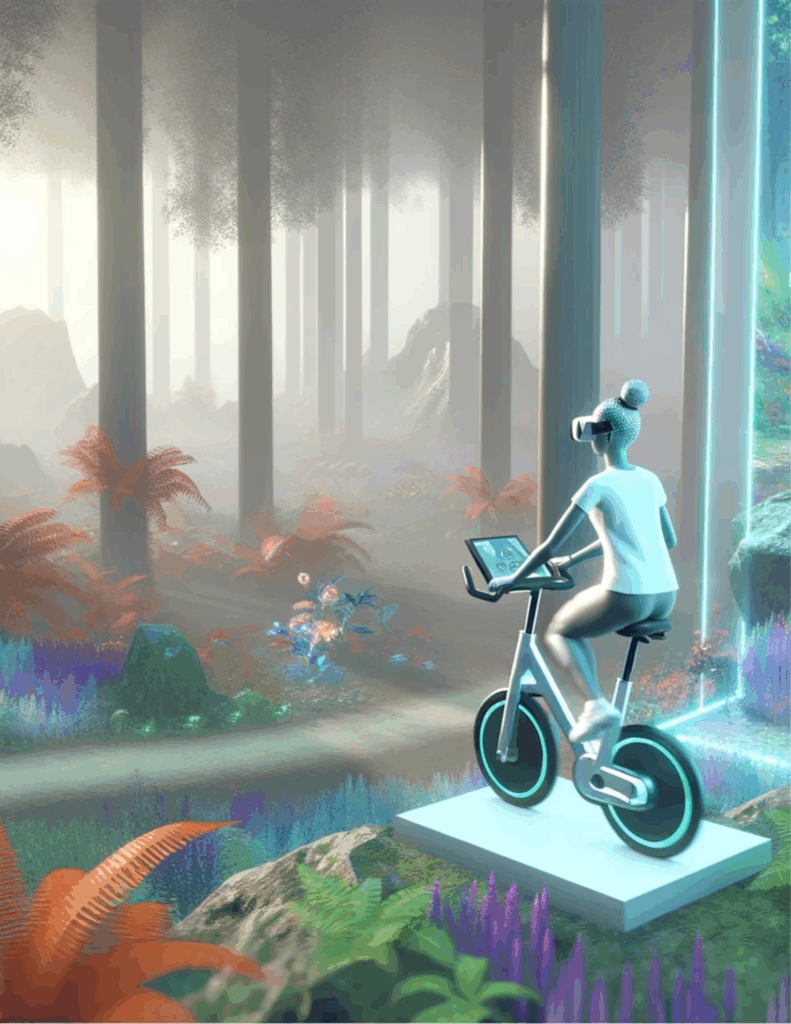
2. Theoretical Framework
BioVR’s design draws on two well-established frameworks from persuasive technology, which focuses on influencing user attitudes and behaviors through interactive systems. The Functional Triad explains how technology can act as a tool, a medium, and a social actor to shape behavior; BioVR integrates all three by providing performance feedback, delivering immersive and aesthetically engaging environments, and offering a supportive, companion-like presence. The Fogg Behavior Model (MAT) highlights that a target behavior occurs when motivation, ability, and triggers align. In BioVR, motivation comes from the visually rich, rewarding VR world; ability is enhanced by simplifying intensity regulation and reducing boredom; and timely triggers are delivered through dynamic environmental changes when the heart rate drops below the target zone—helping users sustain engagement and maintain optimal exercise intensity.
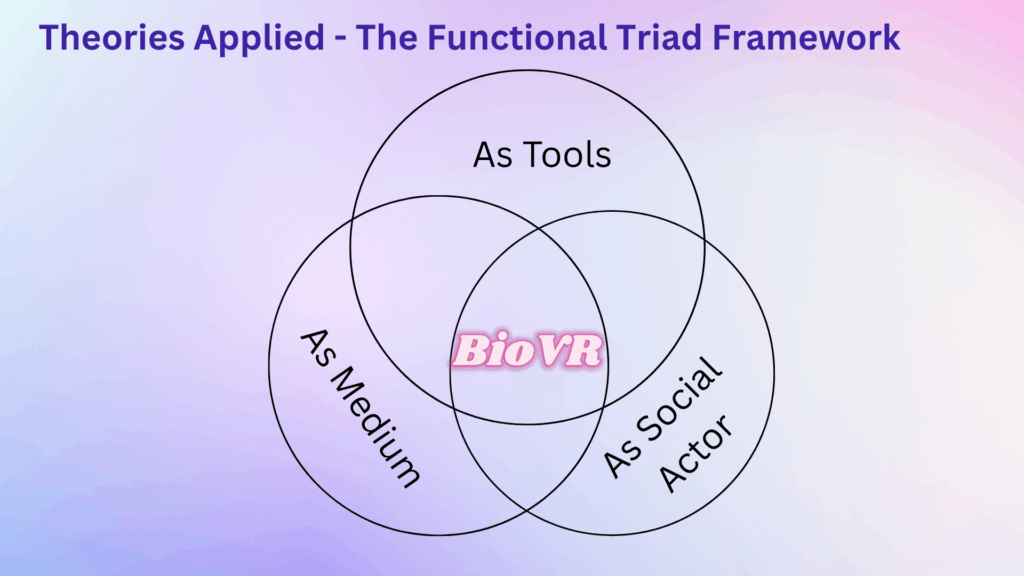
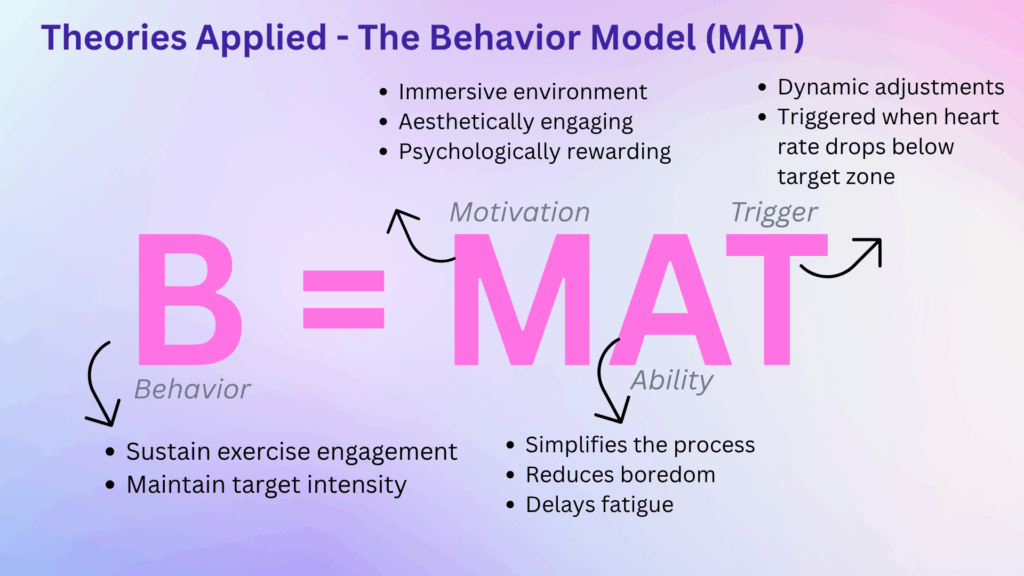
3. Methodology – Research through Design (RtD)
BioVR was developed using an iterative, user-centered design process. We began with formative research to understand user needs and challenges in maintaining exercise engagement. Based on these insights, we created an initial prototype and conducted pilot testing to identify usability issues and refine interaction concepts. Feedback from these sessions guided prototype refinement, improving both functionality and user experience. Finally, we conducted formal user testing to evaluate BioVR’s effectiveness in sustaining target heart rate and enhancing workout engagement.
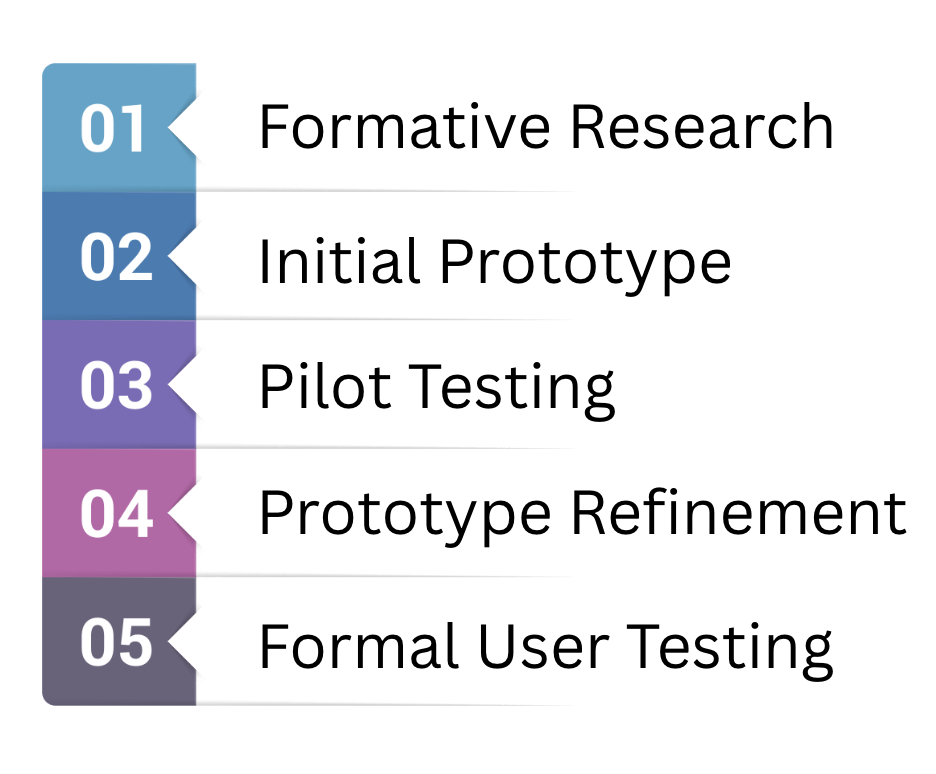
4. System Design
The setup includes a stationary bike, an Apple Watch for heart rate monitoring, and a VR headset for an immersive experience. The VR environment was built in Unity, with the HypeRate API streaming real-time heart rate data from the watch directly into the system. As users pedal, their heart rate is continuously tracked and used to dynamically adapt the virtual scene in real time.
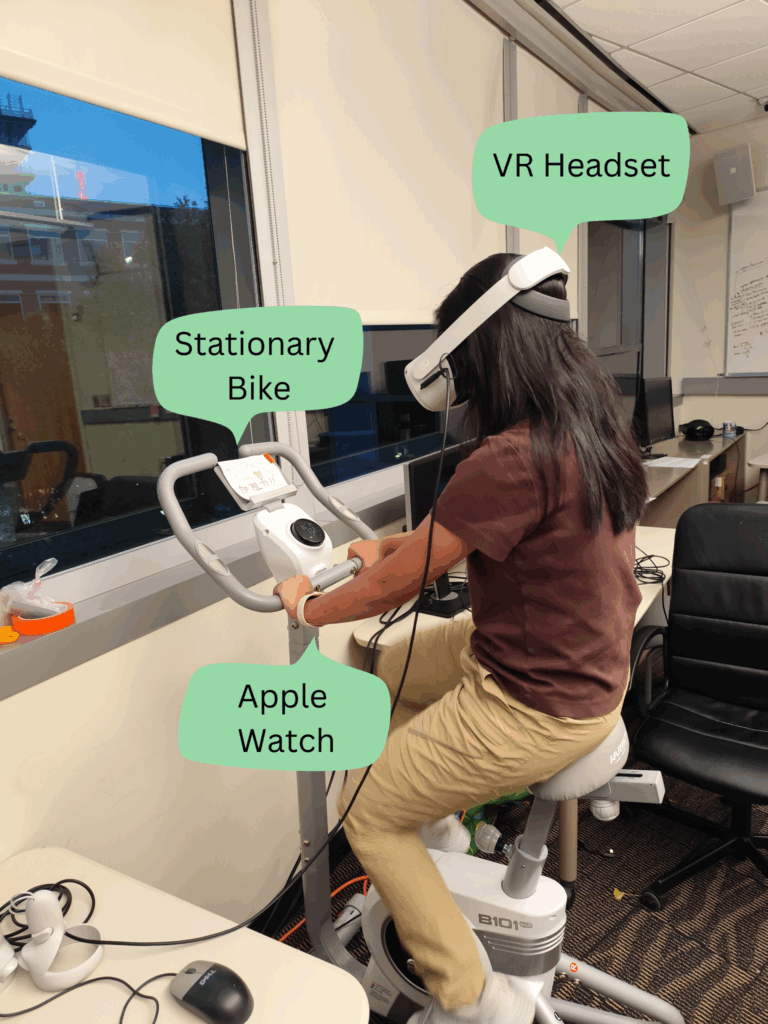
5. Interaction Design
BioVR’s interaction design links the user’s heart rate to both virtual bike speed and environmental lighting, creating an adaptive workout experience. Below 50% of maximum heart rate (MHR), the bike remains stationary and the scene is dimly lit. At 50% MHR, the bike begins to move and the lighting gradually brightens. Between 50%–85% MHR, speed increases proportionally with heart rate, and the environment brightens to daylight. If the heart rate exceeds 90% MHR for over one minute, a warning appears and the entire environment turns red, signaling the need to slow down.
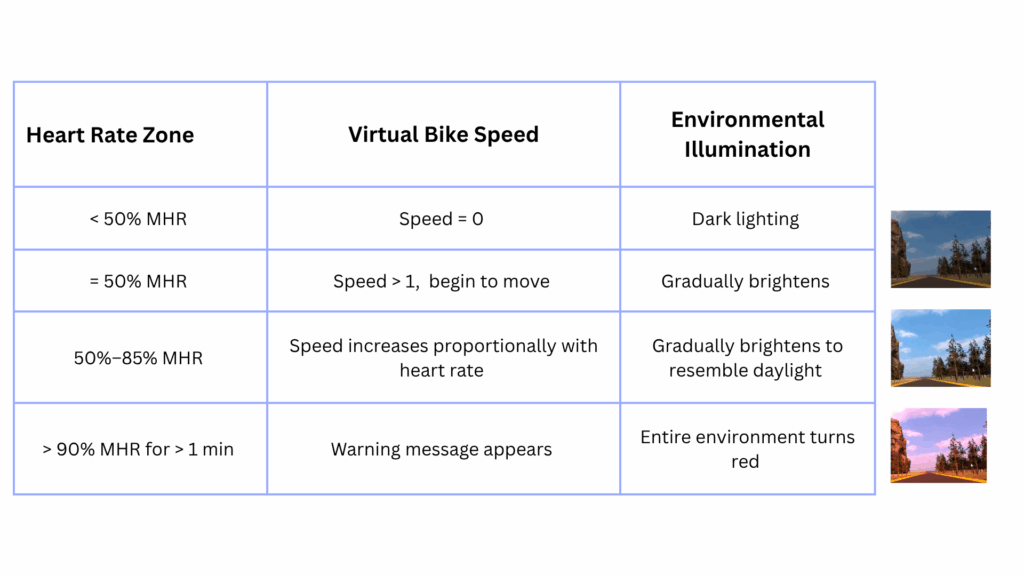
6. User Study
The user study followed a structured process beginning with participant recruitment based on inclusion criteria, followed by a brief pre-test on exercise habits and the collection of resting heart rate data. Participants then completed a short warm-up to familiarize themselves with the equipment before performing cycling tasks under two conditions: Apple Watch only and Apple Watch combined with BioVR’s heart rate–driven VR environment, with a 30-minute rest period between sessions. After each session, participants completed the User Engagement Scale – Short Form (UES-SF) and took part in a short interview. Results showed that BioVR enabled participants to spend more time in their target heart rate zone compared to the control condition, while also reporting higher engagement in focused attention, aesthetic appeal, reward, and overall engagement, with no significant difference in perceived usability. Interview feedback indicated that real-time environmental changes in the VR condition enhanced motivation, distracted from fatigue, and made the exercise feel shorter, although some participants experienced mild physical discomfort from wearing the headset. Overall, the findings suggest that integrating biofeedback into VR can improve both physiological outcomes and subjective exercise experience.
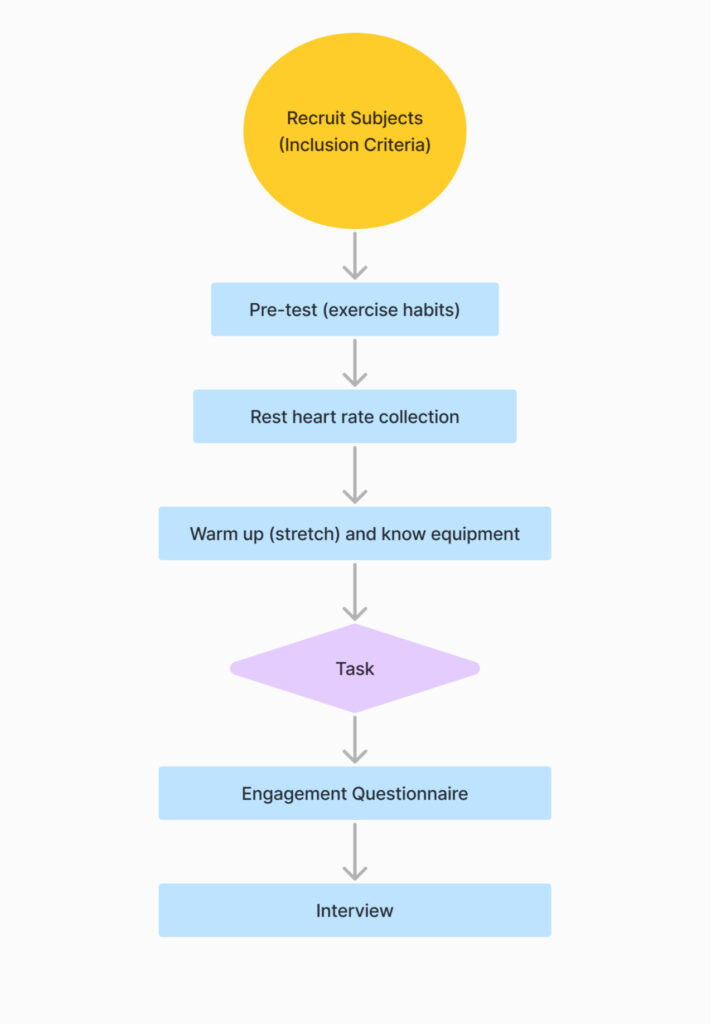

Thanks to my advisor, Dr. Jay Bolter, and my committee members, Dr. Janet Murray, Dr. Jennifer Kim, and Dr. Zhao Ni, for their guidance and support. I am also grateful to Xintong Jiang and Dion Deng for their assistance with the research, and to all participants for their time and contributions.